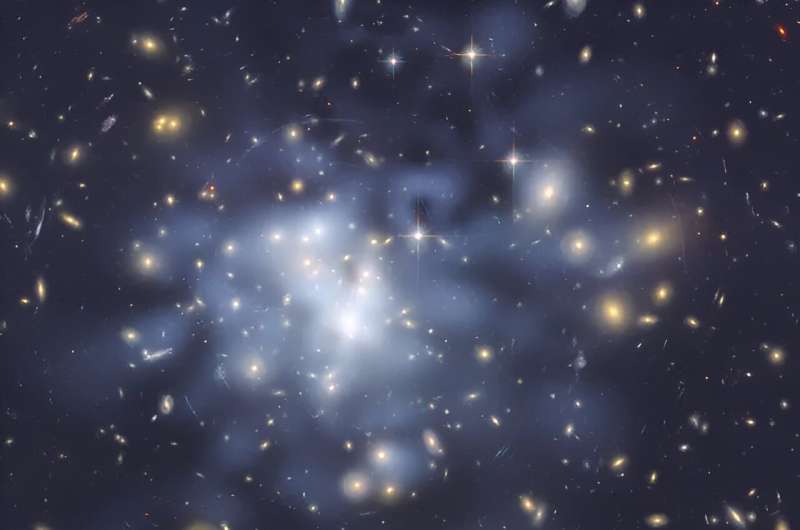This article has been reviewed according to Science X's editorial process and policies. Editors have highlighted the following attributes while ensuring the content's credibility:
fact-checked
trusted source
proofread
Astrophysicist's research could provide a hint in the search for dark matter

Dark matter is one of science's greatest mysteries. It doesn't absorb, reflect or emit light, so we can't see it. But its presence is implied by the gravitational effects it appears to have on galaxies.
Although dark matter makes up about 85% of the cosmos, scientists know very little about its fundamental nature.
Theories abound, and research by Clemson University postdoctoral fellow Alex McDaniel provides some of the most stringent constraints on the nature of dark matter yet. His research also reveals a small hint of a signal that if real, could be confirmed sometime in the next decade or so.
The work is published in the journal Physical Review D.
"With data collection and new discoveries in the future, this small hint could potentially turn into a very concrete detection of a dark matter model," McDaniel said.
Detecting dark matter would be groundbreaking.
"Dark matter is one of the most important things in astrophysics, and we know next to nothing about it. Discovering it will be a tremendous breakthrough," said Marco Ajello, an associate professor in the Clemson Department of Physics and Astronomy and McDaniel's adviser. "Whoever discovers may win a Nobel Prize. It's that big."
In this work, McDaniel and collaborators were searching dwarf galaxies for dark matter that self-annihilates into ordinary matter and gamma rays, a form of light at the highest energy levels. Dwarf galaxies are ideal for study because they are small, rich in dark matter and mostly lack other astrophysics phenomena such as gas, dust and supernova that could contaminate the findings.
"We look for these because ideally, they give us a clean signal or allow us to rule out certain particle theories," McDaniel said.
Some models predict that dark matter has a certain mass or cross section, which is the probability of a specific event occurring due to the interaction of particles. That would determine what researchers would expect to see in gamma rays. If they don't see that, they can rule out those masses and cross sections, he said.
"In this paper, we do more ruling out, saying that dark matter can't have those masses or cross section," said Chris Karwin, a former postdoc at Clemson and a co-author of the study. Karwin is now a postdoctoral fellow at the NASA Goddard Space Flight Center. "But compared to previous studies, we do start to see a hint of something that might be a signal from these systems."
McDaniel's study uses the larger samples that include additional discovered dwarf galaxies and larger amounts of data than previous studies. He included about 50 dwarf galaxies in his study but said that with new, more powerful telescopes coming online in the near future, he expects that number to increase to 150–200.
"The new telescopes are basically dwarf galaxy detectors," he said. "We're projecting with those improvements it's possible that instead of having just a little hint of a signal, we can have something that's a bona fide detection."
Ajello added, "If it [the signal] is real, eventually it will be confirmed."
More information: Alex McDaniel et al, Legacy analysis of dark matter annihilation from the Milky Way dwarf spheroidal galaxies with 14 years of Fermi -LAT data, Physical Review D (2024). DOI: 10.1103/PhysRevD.109.063024 On arXiv: DOI: 10.48550/arxiv.2311.04982
Provided by Clemson University





















